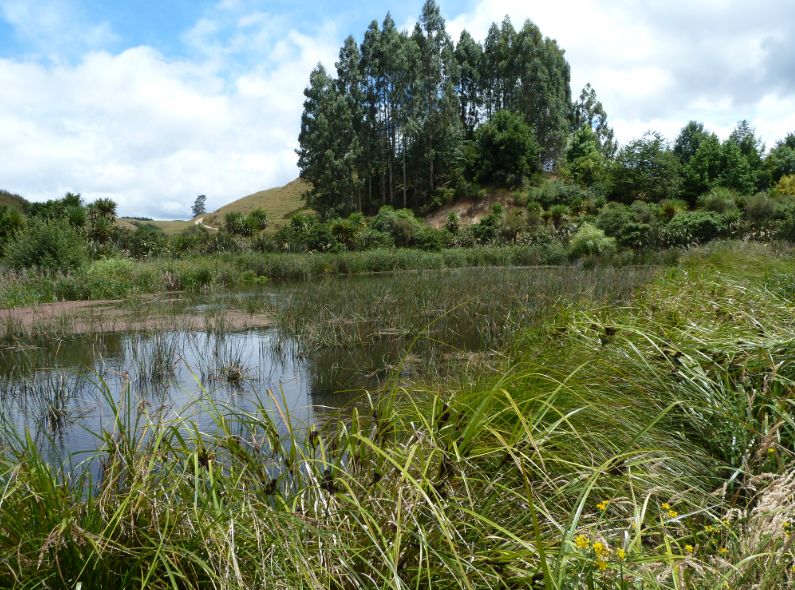New Zealand Could Make Better Use Of Natural Processes To Reduce The Risk Of Flooding

New Zealand could make better use of natural processes to reduce the risk of flooding, according to research by the National Institute of Water & Atmospheric Research (NIWA).
Initiatives that use or mimic natural processes can improve water management and limit the devastation caused by storms and heavy rainfall, says NIWA hydrologist Dr James Griffiths.
"While human-engineered structures such as dams, stop banks, seawalls and stormwater drains are traditionally seen as the main water management interventions to reduce the impact of floods, there is great potential for ‘green infrastructure’ to boost flood protection and resilience. Using natural areas and nature-based solutions to catch, store and clean water could be a win-win scenario, delivering a range of co-benefits in addition to reducing flooding, including increasing biodiversity."
A team at NIWA recently examined research and case studies from around the world where ’nature-based solutions’ had been developed and implemented, to give local authorities an overview of the wide range of options, and also advice on the best ways to assess the benefits.
"Regional and district councils are undertaking feasibility studies on the use of nature-based solutions for flood mitigation, so our review of international studies will help with evidence-based decision-making. There are many different ’nature-based solutions’ to consider, ranging from forested headwaters and corridors and restoring floodplain connectivity, through to landscape features that help retain and detain water, such as natural, restored or constructed wetlands, as well as ponds and bio-retention swales which can store and treat stormwater runoff."
Griffiths says an area or region doesn’t have to wait until it has a large flood before determining whether the preventative measures worked, as modelling can compare various scenarios and predict the effectiveness of different options.
"A central question is how well will it perform in reducing flood peak, when the flood is at its highest. Extreme rainfall events are a major challenge. They require efforts to be made right through the catchment from the headwaters and middle reaches to the lowland flood plains to increase infiltration and detention of water, so it impacts less further downstream in more populated areas."
He says as well as the main benefit of reducing floods, ‘nature-based solutions’ often deliver other advantages. "We’ve looked at how best to evaluate the options, and also gauge the expected co-benefits, which can include improvements in water quality, ecosystem health, air quality, noise reduction, and carbon storage, as well as positive outcomes for economic and social development. ’Nature-based solutions can provide a greater range of benefits than traditional ‘grey engineering’, particularly if they result in a net increase in biodiversity. Our research found that many countries are now considering how to use nature-based approaches to protect, manage and restore ecosystems."
NIWA has developed a preliminary road map to guide the evaluation and implementation of ’nature-based solutions', and is collaborating with local authorities and other stakeholders, so the lessons learned can be shared across New Zealand. Regional and district councils will complete their feasibility studies by mid-2025 and these will help inform wider adoption of this approach into long-term planning.
"If all the local authorities use comparable methods to assess the performance of water management techniques being trialled in their feasibility studies, it will provide valuable learning for everyone." New Zealand needs to, and can, be at the forefront of developing new ways to respond to the risks of flooding, says Griffiths. "Two-thirds of New Zealanders live in areas prone to flooding, and flooding is our most frequent natural disaster, so as land use intensifies and the frequency and intensity of extreme rainfall events increase due to climate change, we need new approaches to preparing for, managing and responding to flooding."


 Gordon Campbell: On Marketing The Military Threat Posed By China
Gordon Campbell: On Marketing The Military Threat Posed By China RNZ Online: How The World Reacted To The Demise Of The Treaty Principles Bill
RNZ Online: How The World Reacted To The Demise Of The Treaty Principles Bill Te Matapihi: Response To Govt’s New Strategic Housing Partnerships: Progress, But Equity Gaps Remain
Te Matapihi: Response To Govt’s New Strategic Housing Partnerships: Progress, But Equity Gaps Remain Banking Class Action: Government’s Retrospective Law Change Threatens Consumer Protections
Banking Class Action: Government’s Retrospective Law Change Threatens Consumer Protections E tū: Journalists Respond To Grenon - Still No Commitment To Editorial Independence
E tū: Journalists Respond To Grenon - Still No Commitment To Editorial Independence Marlborough District Council: Kevin Judd Named Marlborough’s Newest Living Cultural Treasure
Marlborough District Council: Kevin Judd Named Marlborough’s Newest Living Cultural Treasure Parliamentary Commissioner For The Environment: Are We Planting The Forests We Need?
Parliamentary Commissioner For The Environment: Are We Planting The Forests We Need?


